Now it’s about six months later and we have one in the lab. I won’t spend a lot of time justifying this other than to say that in the long run it should be cheaper than using the Ender 5+ (affectionately known as “Tony”) to print things that exceed its generous build volume.
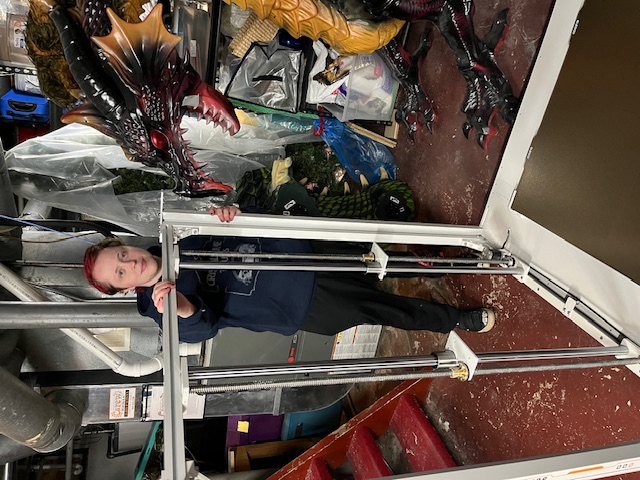
This is a large machine (Wes and dragon for scale)
So far we’ve only printed a handful (armful?) of parts but so far it has been mostly smooth sailing. In particular I’ve been impressed with its ability to resume a print when it runs out of plastic (Tony never quite mastered that trick).
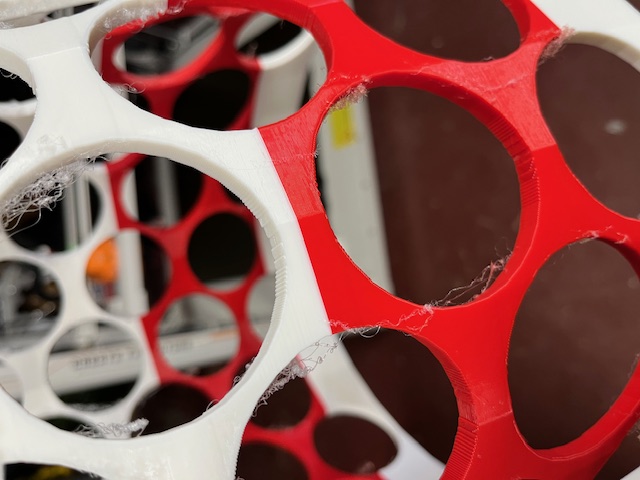
Two filament swaps went into this print and I could detect no weakness or visible artifact (other than color change of course)
This is the first machine I’ve used that runs Klipper, and I was so impressed with it that I’m taking the opportunity of giving Tony a break to upgrade him to Klipper as well.
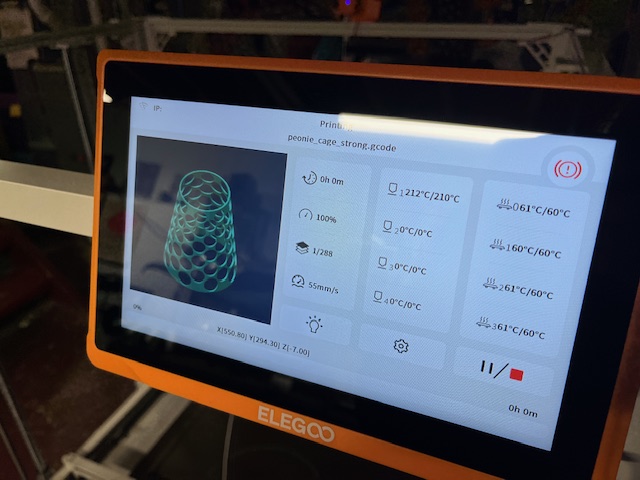
The printers built-in screen is detachable (important when moving around to calibrate the machine) and the size of a large tablet.
There’s a lot I could say that’s already covered in the documentation so for now I’ll try to stick to the things I couldn’t figure out in advance. The machine comes in two boxes on a pallet, and weighs hundreds of pounds. I got it down to the lab by emptying the packages in the driveway and bringing it down piece-by-piece. This wasn’t bad except for the base which had to be 100lbs itself. I recommend having help for this.
Assembly went fairly quick, about an hour and other than the 100 point autolevel it required little calibration before making the first flawless print.
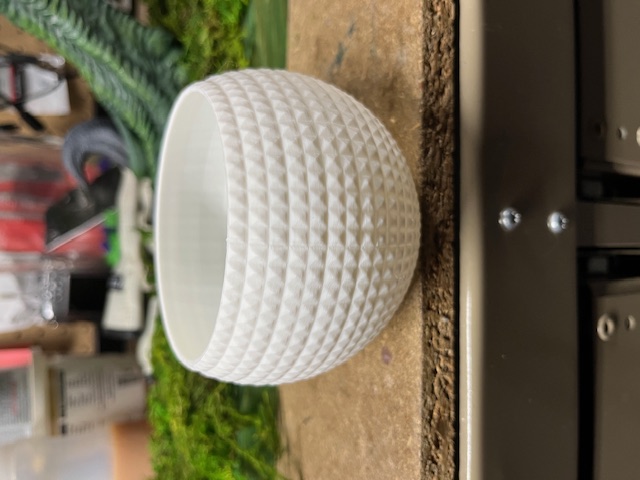
The first print was a small vase using gcode from the included flash drive.
I did manage to break one of the cable chains but after emailing Elegoo about it they sent a free replacement. Be gentle with these if you are setting one of these machines up.
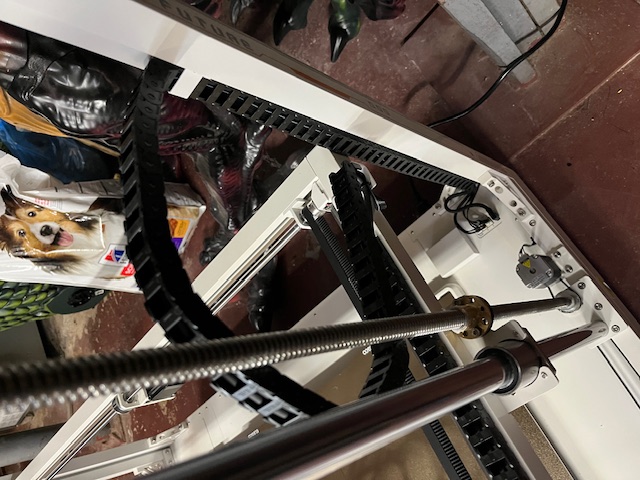
That’s not how the cable chain is supposed to look…
The other thing to pay attention to is that there are 5(!) power supplies in the basement and all of them need to be set to the local mains voltage. My machine was not set to 120v by default so it was good that I didn’t miss this step.
I have a lot more to say about putting this machine to work, but I’ll save that for future posts as I conduct more experiments and gather detailed notes.

Welcome to KGL Bruce!